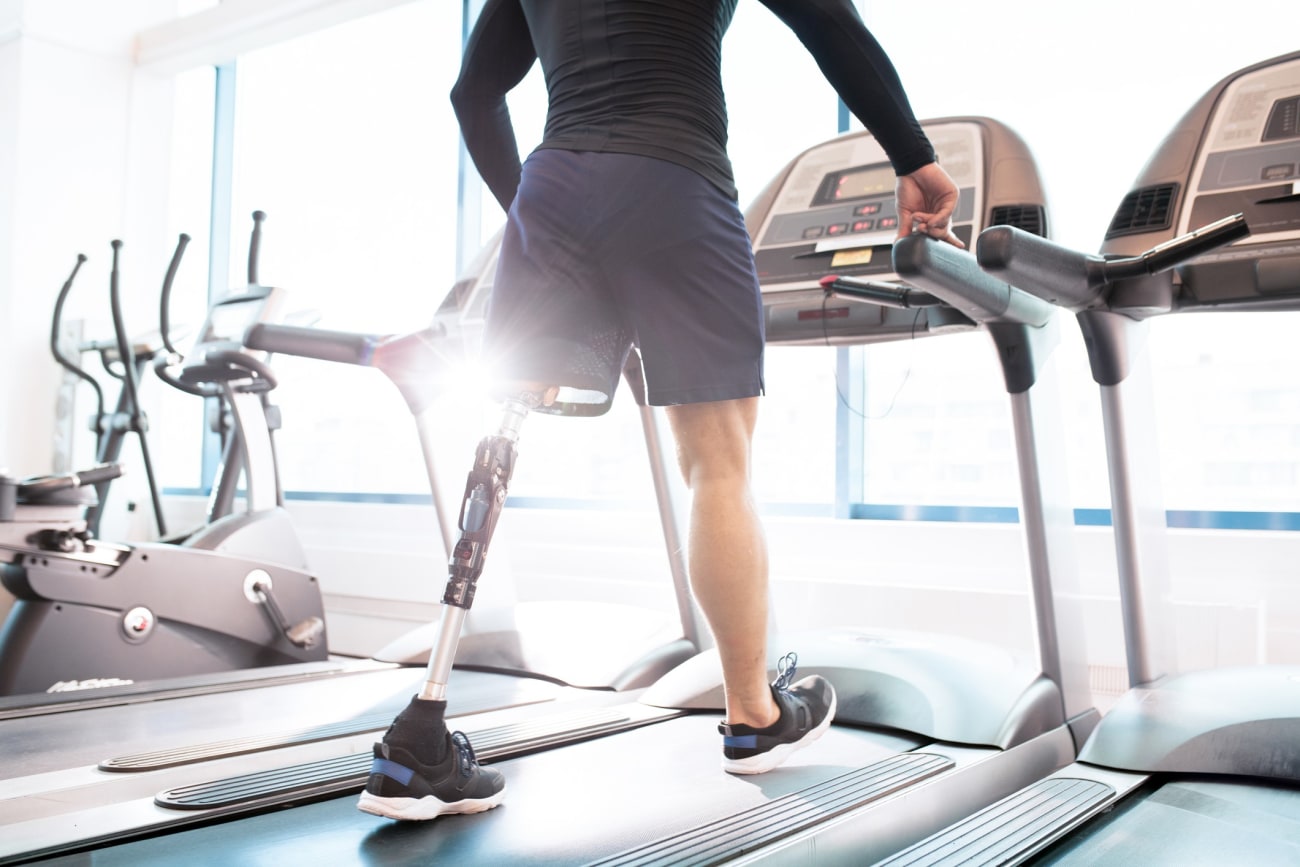
Through the Johns Hopkins Department of Physical Medicine and Rehabilitation’s limb loss rehabilitation, prosthetics and orthotics program, people who have lost a limb or limbs, or who experience limb difference, can get comprehensive care from specialists who will work closely with them throughout every aspect of recovery.
The team of rehabilitation physicians, physical and occupational therapists, orthotists, prosthetists, nurses and rehabilitation psychologists can help patients select, apply and get used to wearing prosthetic and orthotic devices.
![[image name]](https://55933-bcmed.s3.amazonaws.com/bcp/images/dmImage/SourceImage/res-2013-su-0112.png)
– Marlis Gonzalez-Fernandez
“We can provide whatever the patient needs, from the most basic care to the most advanced treatments and everything in between,” says Marlis Gonzalez-Fernandez, a limb loss rehabilitation expert and interim director of the Department of Physical Medicine and Rehabilitation. “We look to identify what patients need based on their circumstances and their goals, and figure out how to make those aims a reality.”
The team also partners with orthopaedic surgeons and plastic surgeons, who perform osseointegration procedures and nerve management surgeries. These surgeries can improve prosthesis use and help reduce or prevent phantom limb pain. The newest team member is an anaplastologist, who is capable of creating realistic prosthetic fingers, hands and toes. The group’s partnership with anaplastologist Andrew Etheridge is rare for a limb loss rehabilitation program — there are fewer than 200 such specialists in the world, and more than half of the U.S. is not served by such an expert.
While major procedures are performed at The Johns Hopkins Hospital, physical and occupational therapists with expertise in limb loss rehabilitation provide services at community clinics across the region, enabling patients to attend therapy sessions close to home. Appointments take place in advanced gym spaces or in the custom-built courtyard at The Johns Hopkins Hospital. Gonzalez-Fernandez says the team works with patients to identify specific goals.
“Patients realize there’s hope to get certain physical things done despite injury. They learn that they weren’t permanently taken away from them,” she says. “Rehab is never as fast as any of us would like, but if patients are willing to put in the work, we will partner with them to give them the tools they need to get there.”
Johns Hopkins employs the latest in prosthetic and orthotic devices — including those used in osseointegration. The team is able to offer the only FDA-approved osseointegration implant for those who have had transfemoral amputations. The group also offers implants that are available outside of the U.S., and can work with the FDA to get compassionate-use approval for those devices. Additionally, faculty members collaborate with the Johns Hopkins University Department of Biomedical Engineering to study control mechanisms for upper limb prostheses.
The department is actively involved in education. Johns Hopkins residency training for physiatrists includes limb loss rehabilitation. The team also hosts a free online symposium every April for medical professionals and patients to discuss the latest in care.
To refer a patient, call 443-997-5476.


